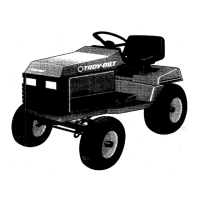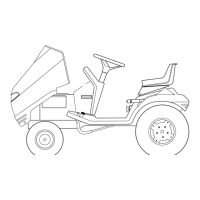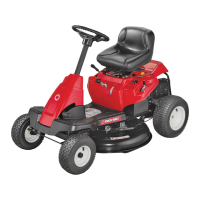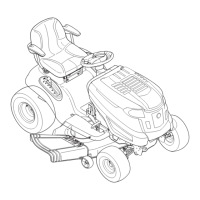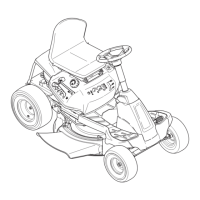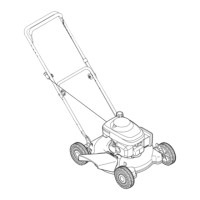What to do if the Troy-Bilt Lawn Mower engine will not turn over?
- FfcastroAug 12, 2025
If the engine of your Troy-Bilt Lawn Mower won't turn over, examine the attachment drive switch.
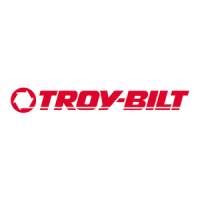
What to do if the Troy-Bilt Lawn Mower engine will not turn over?
If the engine of your Troy-Bilt Lawn Mower won't turn over, examine the attachment drive switch.
What to do if Troy-Bilt 13074-GTX 18 Lawn Mower stalls in a few seconds?
If your Troy-Bilt Lawn Mower stalls a few seconds after starting, you should clean the flywheel screen.
What to do if the Troy-Bilt 13074-GTX 18 engine runs but the unit won't move?
If the engine of your Troy-Bilt Lawn Mower runs but the unit won't move, inspect the transmission.
Why does my Troy-Bilt 13074-GTX 18 Lawn Mower stall when hot?
If your Troy-Bilt Lawn Mower stalls when it gets hot, it might be due to a faulty ignition.
What to check if Troy-Bilt Lawn Mower engine doesn't turn over but start light comes on?
If the start light comes on, but the engine of your Troy-Bilt Lawn Mower doesn't turn over, check the cruise relay, interlock, and cruise switch.
What to check if the Troy-Bilt Lawn Mower attachment drive is inoperative?
If the attachment drive is inoperative on your Troy-Bilt Lawn Mower, check the battery or start solenoid.
Why does my Troy-Bilt 13074-GTX 18 Lawn Mower idle rough?
If your Troy-Bilt Lawn Mower idles roughly, consider that a faulty spark plug may be the cause.
What to do if the headlights do not light on my Troy-Bilt 13074-GTX 18?
If the headlights on your Troy-Bilt Lawn Mower do not light, inspect the fuses.
| Deck Material | Steel |
|---|---|
| Self-Propelled | Yes |
| Mulching Capability | Yes |
| Side Discharge | Yes |
| Grass Collection | Yes |
Contact authorized dealer or factory for unit servicing and part descriptions.
Warranty service is available through your authorized dealer.
Defines left and right sides from the operator's perspective facing forward.
Contact authorized engine dealer for engine service needs.
Repair and replacement owner manuals can be obtained from the dealer or factory.
Importance of safety, reading manuals, training, and proper preparation for operation.
Pre-operation checks like clearing the area and inspecting the unit for safe use.
Precautions for handling volatile gasoline and preventing fires.
Safe practices during operation, keeping clear of moving parts and terrain awareness.
Warnings regarding children and critical safety measures for slopes.
Steps to safely stop the tractor and disengage all functions before leaving.
Procedure to check the engine oil level and add oil if necessary.
Steps for draining and refilling the engine oil and replacing the oil filter.
Information on carburetor adjustment and battery maintenance.
Service for spark plugs and adjusting the front axle for play reduction.
Steps to adjust tie rods for proper front wheel alignment.
Instructions for cleaning the engine air intake screen to ensure proper airflow.
Procedures for cleaning or replacing the air cleaner pre-cleaner and paper element.
Steps to replace the fuel filter at recommended intervals.
Safe methods and locations for lifting the tractor for maintenance.
Understanding interlocks and adjusting the tractor's brakes.
Procedures for hydrostatic maintenance, lubrication, and neutral adjustment.
Steps to adjust the hydrostatic neutral position if the tractor creeps.
A chart detailing lubrication points, frequency, type, and amount required.
A guide to diagnosing and solving common operational problems with the tractor.
Recommended procedures for cleaning, protecting, and storing the tractor.
A summary chart of maintenance tasks and their recommended intervals.
Detailed technical specifications for the tractor model.
A comprehensive list of available attachments and kits for the tractor.
Diagram and labels for major tractor controls.
Descriptions of primary controls like throttle, brake, ignition, and PTO.
Functions of lights, cruise control, hydraulics, fuel gauge, and warning lights.
Essential checks before starting the engine: oil, fuel, and flywheel screen.
Visual inspection, battery, tire pressure, and seat adjustment before operation.
Procedure to break in the electric clutch before initial use or after storage.
Step-by-step instructions for safely starting and stopping the tractor engine.
Guidance on setting the throttle and controlling ground speed.
How the safety interlock system functions and its importance for safe operation.
Instructions for operating the attachment/PTO drive, hydraulic lift, and auxiliary connections.
How to use the hydrostatic transmission for forward and reverse movement and speed control.
Procedures for safely pushing or towing the tractor when the engine is off.
How to use the cruise control feature and operate the lights.
